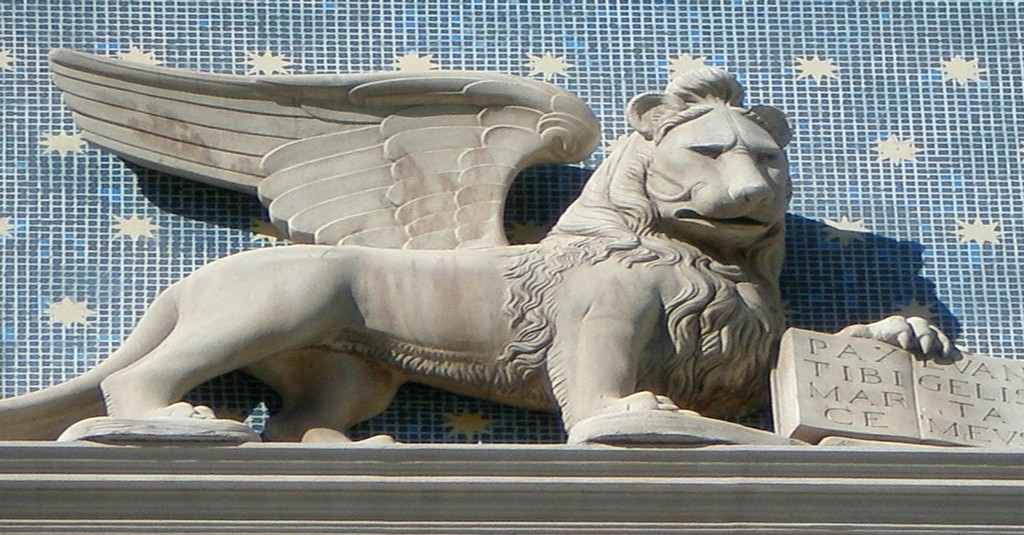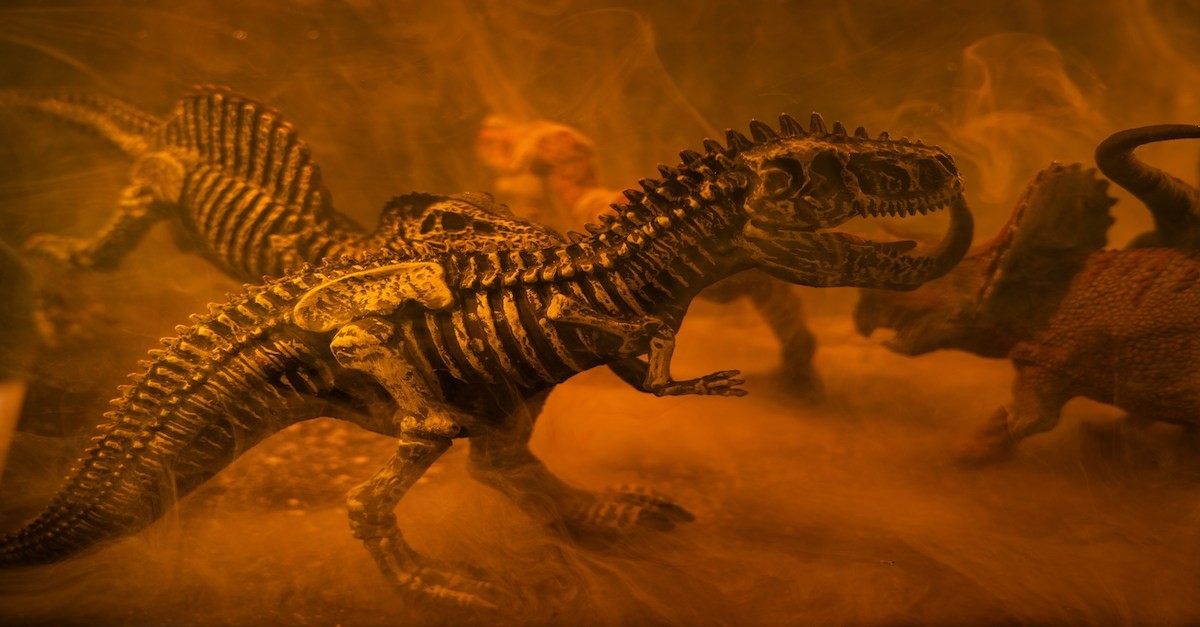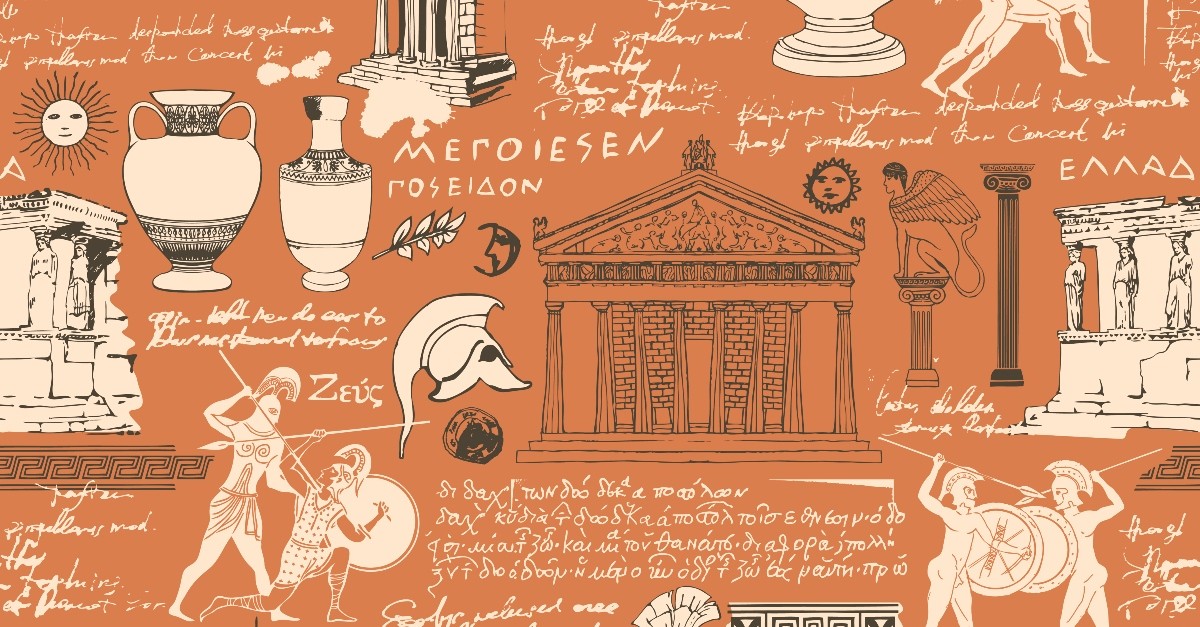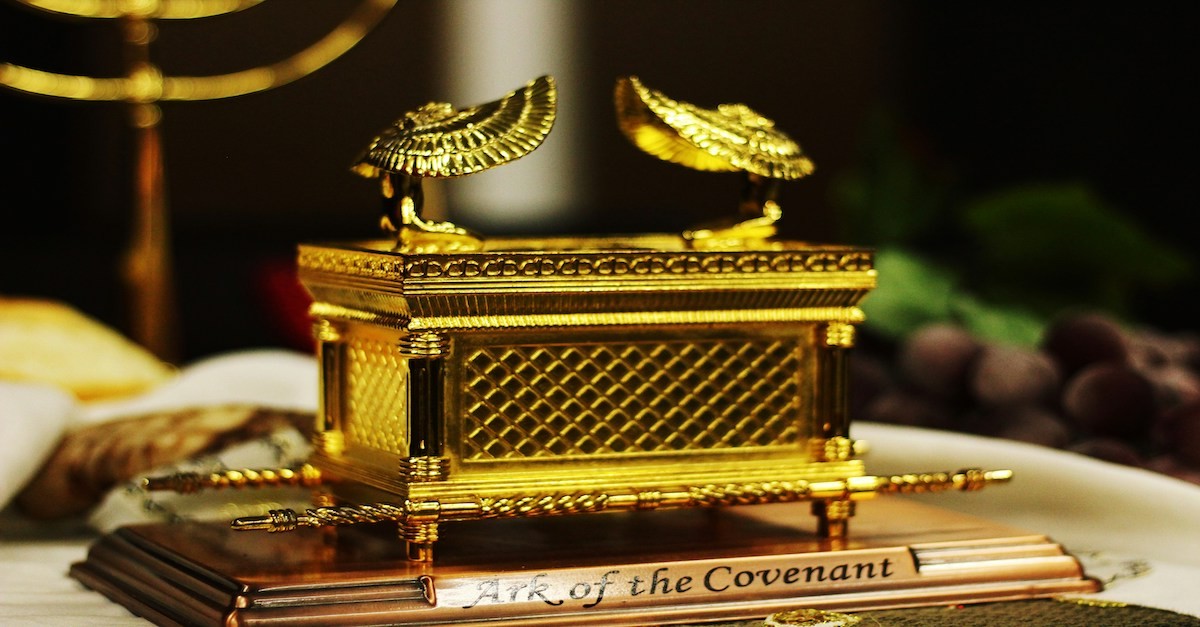
A large, mythological creature with the head and wings of an eagle and the body of a lion, the griffin was a symbol of protection and strength in the ancient world. For centuries, the icon of the griffin has been used in works of art, literature, heraldry, sports team mascots, and corporate logos. In pop culture, the griffin has also made an appearance in countless fantasy novels, video games, and movies. But what is the significance of the griffin, and does it have a connection to the Bible?
Photo credit: Unsplash/Deborah L. Carlson

What Is a Griffin and Was It a Real Creature?
Like many parents, my wife and I have entered a season where our youngest son is obsessed with dinosaurs. He hasn’t even turned two-years-old yet and already, whenever he sets eyes on a T-Rex or stegosaurus, he gleefully points and shouts, “Dinosaur! Dinosaur!”
Of course, our son isn’t the only one who’s been mesmerized by large creatures, real, extinct, or imagined. Dinosaurs, dragons, and sea monsters have always fascinated (and even terrified) humanity. Some of these creatures are the handiwork of God, the Creator of all things. Others are the mere product of man’s imagination. And some, perhaps alive at one time in history, are now gone and have become more creatures of fantasy than God’s creation.
So, where does the griffin fall within this list?
A popular creature of Greco-Roman and Asian mythologies, the griffin was traditionally depicted as a large bird of prey with the body of a lion and the wings of an eagle. In some renderings, the griffin also had pointed ears, the legs of an eagle in place of forelegs, and a curling tongue. It was one of the most fantastic and majestic creatures of the ancient world, appearing throughout many different cultures.
The exact etymology of the name griffin has been largely obscured over time. Some look to the Old French grifoun, based on the late Latin gryphus from the Latin Greek grypes, as inspiration for the creature’s name. The Greek adjective grypós, which literally means “hooked” or “bent,” also makes sense, given the griffin’s sharp, hooked beak.
But did such a creature ever exist?
As the griffin is most commonly depicted, it is unlikely. Some may look to the unique characteristics of the platypus as evidence of the possibility of a bird/mammal hybrid, similar to what we see in images of the ancient griffin. However, there is no scientific or genetic evidence to conclude that such an animal ever existed or could ever exist.
This, therefore, begs the question, where does the griffin, or the concept of the griffin, come from?
Photo credit: Unsplash/Engin Akyurt

Griffin Origin and Its Depiction in Popular Culture
Although depictions of large, hybrid creatures resembling the griffin can be found in many cultures and civilizations, Mesopotamia, Egypt, India, and Persia among them, the Greek griffin probably had the greatest influence on our imaginations.
In Greek mythology, the griffins were fierce creatures who resided on the edges of the known world, watching over large deposits of gold in the mountains. Many Greek authors wrote of a warlike, one-eyed race known as the Arimaspians, who occasionally rode out on horseback to loot and steal this gold, bringing them into conflict with the griffins.
As a result, the griffin was often seen in classical antiquity as a guardian of gold as well as a noble protector of priceless treasures.
Many Greek temples, cauldrons, and other artifacts were inscribed with the image of the griffin. Even Greek deities, such as Apollo, Dionysus, and Nemesis, had ties to the majestic guardian. According to the Roman poet Claudian, the Greek god Apollo was known to ride griffins to get from place to place. Other artifacts depict Dionysus, the Greek god of wine, festivity, and ecstasy, using griffins to pull his chariot.
At some point in griffin lore, the claws and feathers of the griffin were also seen as priceless treasures. In fact, many believed that the griffins laid stones or agate instead of eggs. Understandably, these rare gems would have been highly sought after in the ancient world. But while some museums claimed to possess the recovered talons and eggs of long-extinct griffins, scientific examination quickly debunked these claims by genetically attributing these remains to known, classified birds.
Of course, there are Near Eastern civilizations predating Ancient Greece that also reference large, winged creatures resembling the griffin. The griffins of India, for example, were said to be about the size of a wolf and were venerated as sacred beings, given their proximity to the sun. Scholars looking beyond Greek mythology have also noted similarities and possible links to the Akkadian karūbu, as well as the Hebrew krvb, or “cherub” (more on this in a moment).
In any case, the early concept of the griffin, or something resembling it, eventually spread to the Greek islands, where it became an icon of Greek mythology.
The image and influence of the griffin, though mythological in nature, did not, however, fade with the Greeks. In fact, griffins have appeared in works of art, literature, and other media ever since.
For example, in Dante Alighieri’s Divine Comedy story Purgatorio, Dante encounters a chariot pulled by a griffin in earthly paradise. John Milton also references a griffin as an allusion to Satan in his epic poem Paradise Lost.
In contemporary literature, forms of the griffin appear in Lewis Carrol’s Alice’s Adventures in Wonderland, C. S. Lewis’ The Chronicles of Narnia, and Holly Black and Tony DiTerlizzi’s Spiderwick Chronicles.
In The Son of Neptune, the second book in Rick Riordan’s The Heroes of Olympus series, the main heroes are attacked by griffins while in Alaska, and in the third book of J. K. Rowling’s popular Harry Potter series, Harry famously rides a hippogriff, a variant of the griffin, that is half eagle and half horse.
When it comes to the griffin, however, many people may still wonder: is the griffin referenced in the Bible at all? If so, what is its significance?
Photo Credit: ©iStock/Getty Images Plus/paseven

Is the Griffin Referenced in the Bible?
To answer this question, we have to do a little bit of research and investigation.
Are large creatures found in the Bible?
To start, we can look to the “behemoth” referenced in Job 40 as an example. Of this beast, it is written, “Behold now, Behemoth, which I made as well as you; he eats grass like an ox. Behold now, his strength in his loins and his power in the muscles of his belly. He bends his tail like a cedar; the sinews of his thighs are knit together. His bones are tubes of bronze; his limbs are like bars of iron” (Job 40:15-18).
This monster, which many believe could be a reference to a large land-based dinosaur, was clearly an animal of immense size. But while the dinosaur theory has some credibility, it may disappoint my two-year-old son to learn that most scholars agree that the “behemoth” of the Bible probably refers to a more general land beast or large quadruped, most likely a water-ox or Nile-horse, otherwise known as the hippopotamus.
Perhaps not as large as the looming brachiosaurus or majestic as the extinct woolly mammoth, the hippopotamus was (and is) a creature of immense power and ferocity. To the people of Egypt and people of the ancient world, the hippopotamus was an impressive creature.
The Bible also references the “leviathan” as a large aquatic creature who terrorizes the seas but is ultimately no match for the God of creation (Job 3:8, Job 41:1, Psalms 74:14, Psalms 104:26; Isaiah 27:1). It is possible that, like the behemoth, the leviathan was a large dinosaur, sea dragon, or some other monster of the deep. We do not know. The Bible does make clear, however, that God far exceeds and surpasses the leviathan in size, strength, power, and wonder.
But what about creatures of the skies? Is there anything in Scripture that matches the description of the griffin?
Some have pointed to passages in the Torah, specifically Leviticus 11, that reference the types of unclean animals God strictly prohibited His people from eating to separate them from their idolatrous, pagan neighbors.
In Leviticus 11:13-19, Moses lists many specific birds that were detestable and abhorrent, and therefore not to be eaten. Among them were the vulture, the buzzard, the kite, the falcon, the raven, the ostrich, the owl, the sea gull, the hawk, little owl, the cormorant, the great owl, the white owl, the pelican, the carrion vulture, the stork, the heron, the hoopoe, and the bat (see also Deuteronomy 14:2). Most of the birds on this list are commonly identified and still in existence today. Nowhere on this list, however, does the griffin appear. Only in certain English translations is the “griffon-vulture” included (Leviticus 11:13 - Modern English Version (MEV), New English Translation (NET), New Living Translation (NLT)). However, this is certainly just another name for an eagle or a variant of the common vulture or buzzard rather than an overt reference to the half eagle/half lion, mythological griffin.
Additionally, in Daniel’s prophetic vision of the four beasts, we read that Daniel saw a creature who, “was like a lion and had the wings of an eagle.” He continues, “I kept looking until its wings were plucked, and it was lifted up from the ground and made to stand on two feet like a man; a human mind also was given to it.” (Daniel 7:4) This, of course, represented the symbolic rise of King Nebuchadnezzar. And yet, its imagery does have parallels to the Greek griffin.
Another possible inspiration for the ancient griffin could also come from the “cherubim” of Scripture (see Ezekiel 10:14, Psalms 18:10, Genesis 3:24). According to the editorial staff at Christianity.com, “a cherub, or plural form Cherubim, is a celestial figure frequently referenced in the Bible. In Christian, Jewish, and Islamic literature, the cherubim are angelic winged beings with human, animal, or birdlike attributes that serve as throne bearers of God.”
First seen as protectors of the Garden of Eden (Genesis 3:24), the image of winged cherubim was used in ornate sculptures that guarded the Holy of Holies of the Tabernacle of Moses and later temple of Jerusalem.
David later writes that “He (God) rode upon a cherub and flew; and He sped upon the wings of the wind.” (Psalms 18:10) In other words, the cherubim were the living chariot of the Almighty.
The prophet Ezekiel also described these divine creatures in this way: “each one had four faces. The first face was the face of a cherub, the second face was the face of a man, the third the face of a lion, and the fourth the face of an eagle.” (Ezekiel 10:14; emphasis added; see also Revelation 4-6) Of course, these descriptions do not align perfectly with the iconography of the mythological griffin. However, there are some noteworthy similarities.
And yet, it is important to remember that the biblical cherubim were not literal creatures that roamed and inhabited the earth, as was the case with the griffins of Greek mythology. Rather, they were divine, angelic beings whose description in Scripture is mostly symbolic.
But could the cherubim of Scripture have inspired other ancient, mythological winged creatures that would ultimately become the griffin as we know it? It is possible.
Obviously, the lion (Genesis 49:8-10; Hosea 11:10; Revelation 5:5) and eagle (Isaiah 40:31) are incredibly significant and deeply symbolic in Christian theology for the way they represent the majesty and power of Jesus Christ. However, to assume that the griffin, which combines the eagle and the lion into a composite creature, is somehow an ideal representation of Christ is a faulty assumption. At best, the church would be appropriating a fantastical, mythological, and even pagan creature that was never seen or intended to reflect the divine nature of Jesus Christ. In many ways, the biblical representations and images of Jesus Christ are sufficient. God gave them to us for a reason.
So, is the griffin in the Bible? The short answer is not really. There is no clear reference to a half bird, half lion in Scripture. In the end, the griffin is another mythological creature that can be seen and understood as a creation of man’s imagination.
Instead, when it comes to the animals of God’s creation, be it bird or beast, Christians would be wise to remember the words of the Lord: “I know every bird of the mountains, and everything that moves in the field is Mine. If I were hungry I would not tell you, For the world is Mine, and all it contains.” (Psalms 50:11-12)
To Him be the glory forever and ever. Amen!
Further Reading
“What is a Cherub? The Cherubim in the Bible”
“What is the Leviathan According to the Bible?”
“Are Dragons Really Mentioned in the Bible?”
“What Does the Bible Say About Dinosaurs?”
Photo credit: Unsplash/Igor Rodrigues

Originally published Tuesday, 11 February 2025.
